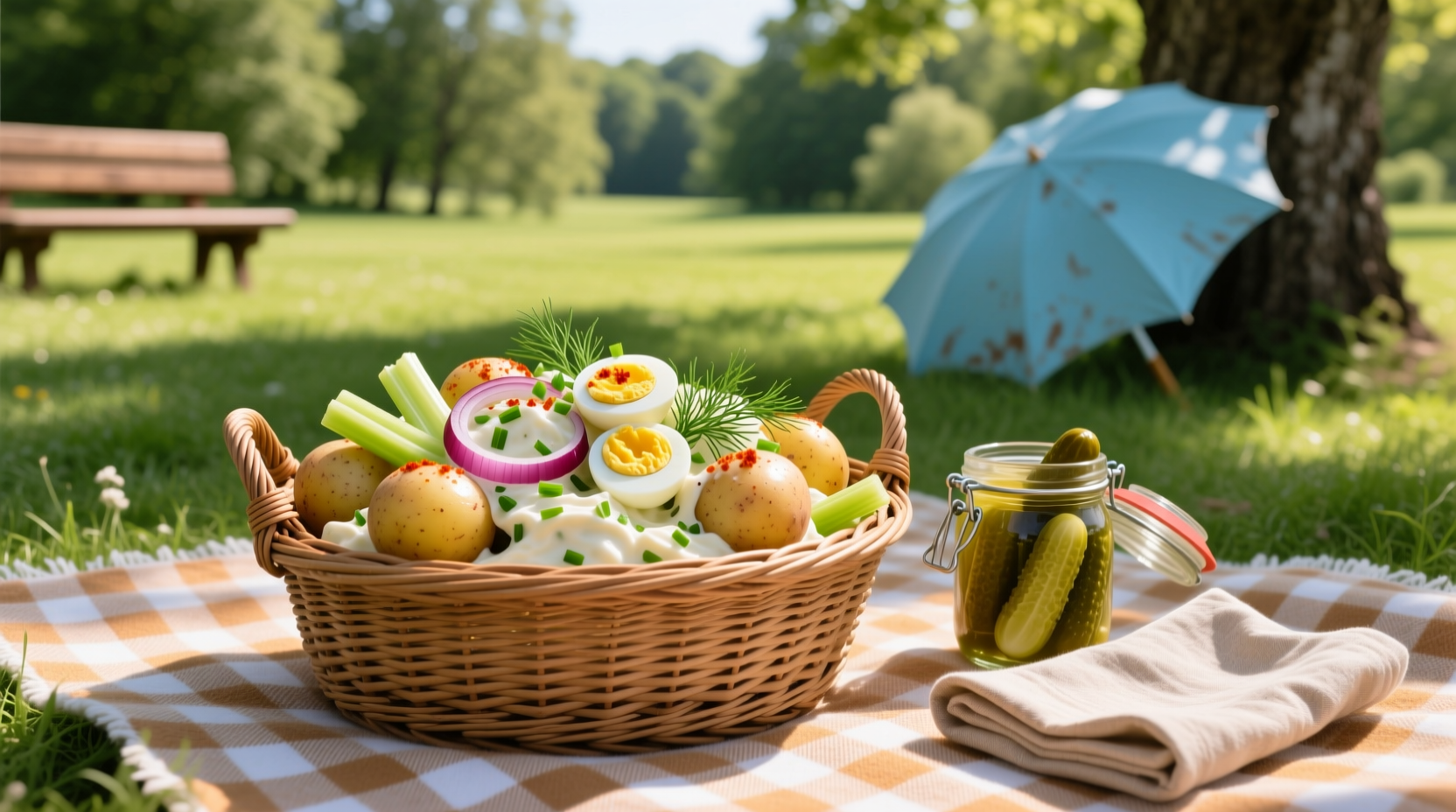Why Your Picnic Potato Salad Needs Special Treatment
Standard potato salad recipes often fail outdoors because they don't account for temperature fluctuations and extended exposure. Unlike indoor meals where you serve immediately, picnic potato salad must maintain quality for 2-4 hours in warm conditions while preventing bacterial growth. The USDA Food Safety and Inspection Service confirms that potato salad enters the "danger zone" (40°F-140°F) within 30 minutes when left unrefrigerated, making proper preparation critical for both taste and safety.
Preparing: Selecting Ingredients That Perform Outdoors
Choosing the right components determines whether your potato salad survives the journey to the park. Waxy potato varieties like Yukon Gold or red potatoes hold their shape better than starchy Russets when mixed with dressing and transported. Their lower starch content prevents that unpleasant mushiness that develops in traditional picnic salads.
| Dressing Type | Picnic Suitability | Key Benefit | Storage Limit |
|---|---|---|---|
| Vinegar-based | Excellent | Acidity slows bacterial growth | 4 hours |
| Mayonnaise-based | Fair | Creamy texture | 2 hours |
| Mustard-based | Good | Natural preservative qualities | 3 hours |
| Cream-based | Poor | Rich flavor | 1 hour |
This comparison from the FDA Food Code demonstrates why vinegar-based dressings outperform traditional mayonnaise options for outdoor events. The higher acidity creates an environment less hospitable to bacteria like Staphylococcus aureus, which commonly causes potato salad-related foodborne illness.
Making: The Temperature-Controlled Method
Professional chefs follow a precise temperature sequence that home cooks can easily replicate. After boiling your potatoes until just tender, immediately cool them in an ice bath rather than letting them sit at room temperature. This rapid cooling prevents overcooking and reduces the time spent in the bacterial danger zone.
When preparing picnic potato salad, add your dressing while the potatoes are still slightly warm (around 90°F). This allows the potatoes to absorb flavors better without creating a soggy texture. The University of Minnesota Extension confirms this technique results in more flavorful potato salad that maintains structural integrity during transport.

Transporting: The Insulated Container Strategy
How you transport your potato salad matters as much as how you make it. Use a rigid cooler with pre-chilled ice packs rather than a soft-sided bag. Place the potato salad container in the center of the cooler, surrounded by ice packs on all sides. This creates a stable temperature environment that keeps your salad below 40°F for up to 4 hours.
Avoid common mistakes like:
- Placing the container directly on ice (causes uneven cooling)
- Using a single large ice block (less effective than multiple smaller packs)
- Opening the cooler frequently (allows warm air inside)
Serving: Timing and Presentation Techniques
Timing your serving correctly prevents the most common picnic potato salad failures. Keep your salad chilled until 15 minutes before serving time. This brief warming period allows flavors to bloom while maintaining food safety. Never leave potato salad sitting in direct sunlight—set up your serving area in shade and use a tablecloth to insulate the container from hot surfaces.
For presentation that withstands outdoor conditions, layer ingredients strategically. Place delicate items like fresh herbs and hard-boiled egg slices on top just before serving rather than mixing them throughout. This prevents discoloration and maintains visual appeal throughout your event.
Troubleshooting: Fixing Common Picnic Problems
Even with careful planning, issues can arise. If your potato salad becomes watery during transport, drain excess liquid and add a tablespoon of dry breadcrumbs to absorb moisture without altering flavor. For salads that have become too firm in the cooler, gently fold in a teaspoon of warm broth to restore creaminess.
When temperatures exceed 90°F, reduce expected safe serving time by 50%. The National Weather Service confirms that high temperatures accelerate bacterial growth exponentially, making standard food safety guidelines insufficient during heat waves.
When Potato Salad Isn't Right for Your Picnic
Understanding context boundaries prevents food safety risks. Potato salad becomes unsuitable for picnics when:
- Outdoor temperatures exceed 90°F for extended periods
- You lack proper insulated transport containers
- The event lasts longer than 4 hours without refrigeration
- Serving to vulnerable populations (pregnant women, elderly, immunocompromised)
In these situations, consider alternatives like vinegar-based German potato salad served at room temperature or cold pasta salads with oil-based dressings that have longer outdoor stability.
Evolution of Picnic Potato Salad Through Food Science
Potato salad has transformed from a risky picnic item to a reliable outdoor dish thanks to advances in food science. In the early 20th century, commercial mayonnaise production introduced preservatives that improved shelf stability. The 1950s brought refrigerated transport options for home use, while modern understanding of pH levels and bacterial growth has refined preparation techniques. Today's picnic potato salad benefits from over a century of food safety research documented by institutions like the USDA.











 浙公网安备
33010002000092号
浙公网安备
33010002000092号 浙B2-20120091-4
浙B2-20120091-4